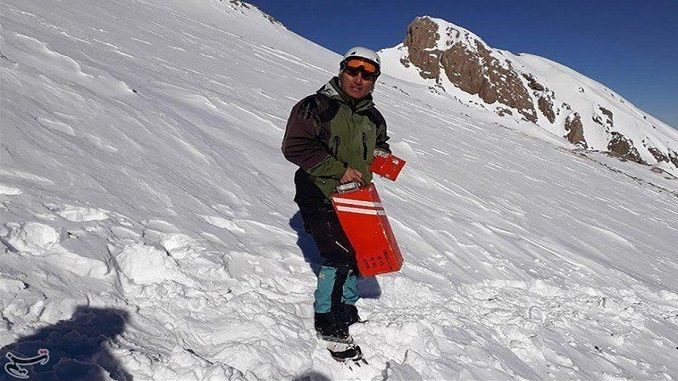
Rescue teams finally managed to find the black box of the ATR72 plane, which crashed on February 18 in Yasouj, southwestern Iran, killing all people on board, Tehran Times reports. The twin-engine turboprop plane, operated by Aseman Airlines, with some 60 passengers and six crew on board crashed into the Dena mountain range after vanishing from the radars for about an hour.
While search and rescue teams were immediately dispatched to the scene the foggy and stormy mountainous region made it almost impossible for the rescue workers to spot the plane and the victims of the deadly crash in the first place.
Red Crescent Society couldn’t dispatch any helicopters because of the bad weather but they sent a drone to the area. The rescue teams were also unable to fly over the crash site in helicopters. Instead, they had to climb Mount Dena, which has an elevation of about 14,500 feet. Finally, on February 20 the wreckage and bodies were found. However, poor weather conditions hindered search operations and it took two weeks for the search and rescue teams to finally manage to find the black box and some of the bodies.
According to IRNA news agency, currently, some of the bodies are recovered and transferred to Yasouj forensics for DNA tests. The exact number of bodies found on the crash site is not announced yet. Moreover, as per another news piece by ISNA news agency the black box which was found on Saturday was handed over to the authorities on Sunday. The true cause of the tragic incident is yet to be decided.
Hossein Derakhshan, the spokesperson of the Iranian Red Crescent Society’s Relief and Rescue Organisation, announced on Saturday that the new pieces of the plane might include the doomed ATR plane’s black box, but they need to be investigated after being transferred down. Along with the plane wreckage, further remnants of the victims have been found, which will be soon transferred to the bottom of the mountains, he added in a Farsi interview with Mizan.
“The box that recorded flight parameters and the one with conversations in the cockpit have been handed over to judicial authorities,” Reza Jafarzadeh, the public relations director of Iran’s civil aviation organization, told the official government news agency IRNA.
Jafarzadeh said the two black boxes of the Aseman Airlines ATR-72 were found by a professional team of mountaineers. They were to be handed over to experts of Iran’s Civil Aviation Organization to determine the cause of the accident.
Mohammad Saeed Sharafi, a Civil Aviation Organisation official, also told IRNA that examinations by CAO experts were needed to confirm if the black box has been found. An Iranian lawmaker also announced that once the black box is found, it will be handed over to the prosecutor’s office to be investigated.
The ATR-72 flight operated by the Iran Aseman Airlines crashed on February 18 into areas near the peak of Dena Mountain, 50 minutes after taking off from Tehran’s Mehrabad Airport and before making it to Yasuj in western Iran. The twin-engined turboprop ATR 72 that crashed was more than 24 years old. The Flight Safety Foundation’s aviation-safety.net website said the plane was restored to service about three months ago, after being in storage for six years. Based in the French city of Toulouse, ATR is a joint venture between Airbus and Italy’s Leonardo.
There were no survivors among the 65 passengers and crew members on the plane, whose bodies were buried under ice and snow. The search and rescue operation started shortly after the tragic incident in mountains adjacent to the crash site, but bad weather, including dense fog, snow, and high winds have slowed down the recovery efforts in the Dena mountain range. The severe weather has also prevented helicopters from landing in the area and accelerating the search operation.
A Boeing 727 crashed in northwest Iran in 2011, killing 78 people, and in 2009 all 168 people on board died when a Caspian Airlines Tupolev crashed en route for Armenia. In 2003 an Ilyushin-76 troop carrier crashed in southeast Iran, killing all 276 Revolutionary Guard soldiers on board as well as the crew.
Although a deal with world powers on Tehran’s nuclear program in 2015 has lifted some of the sanctions officials blame for the fleet’s antiquity, many older planes are still in service, particularly on domestic routes.
